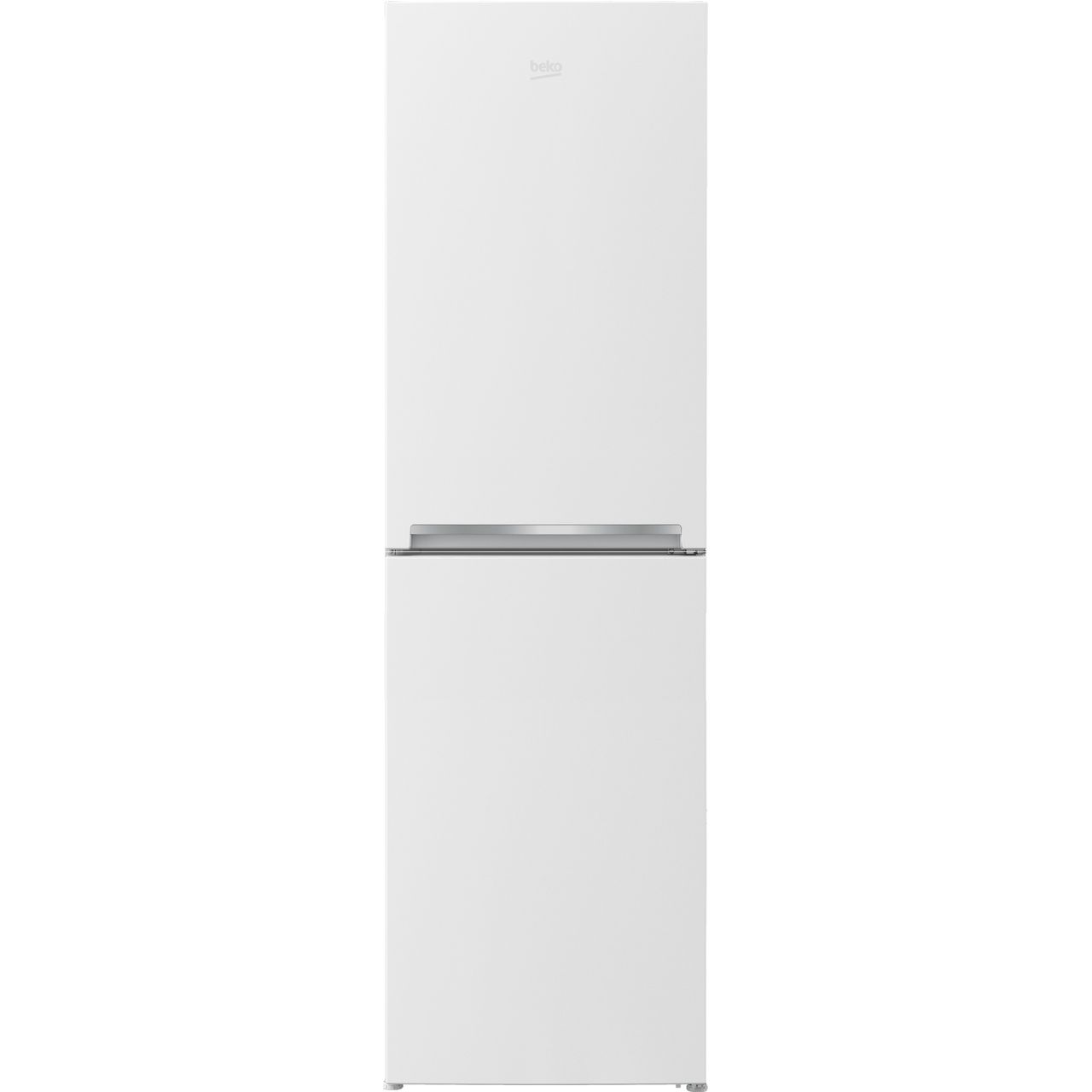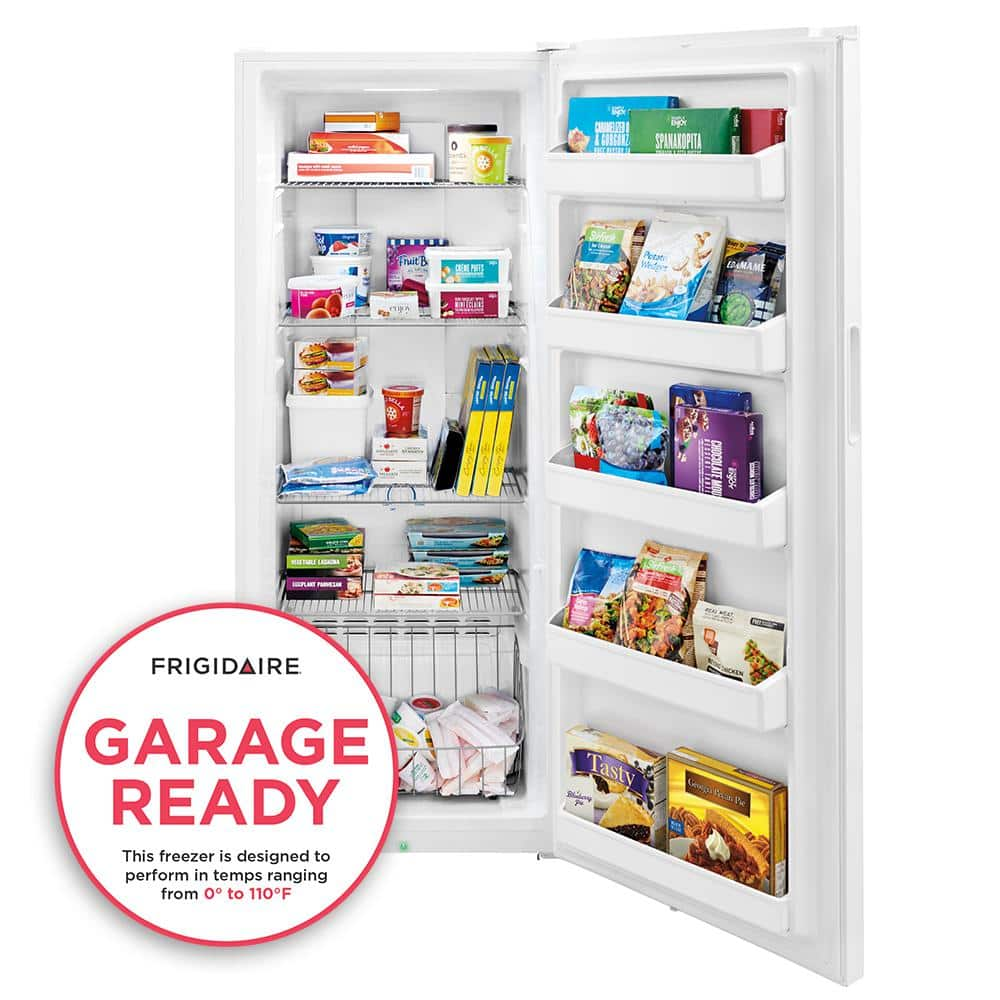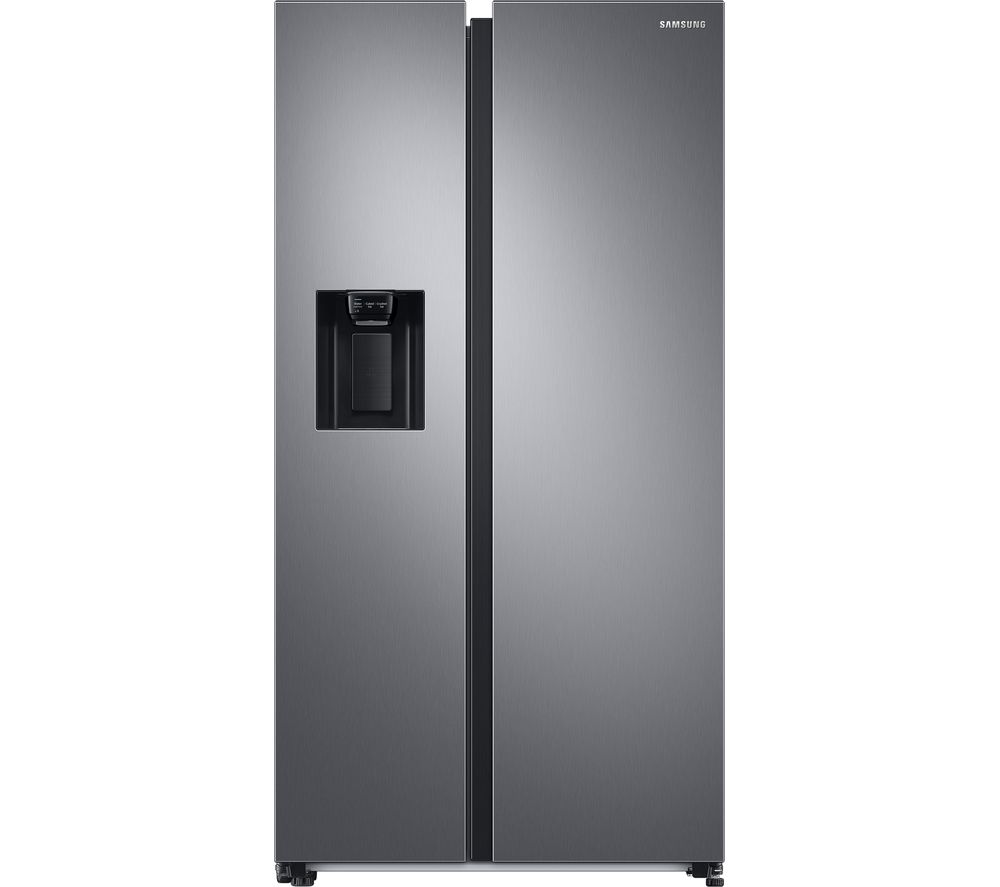Beko CRFG3582W 50/50 Frost Free Fridge Freezer – White – A+ Rated
263 litre capacity – holds 14 bags of food shopping. Frost free freezer – never manually defrost again. Special drawer to keep fruit and veg organised. Reversible doors to suit your kitchen layout.
Keep your ingredients for Sunday roasts and other recipes fresh for longer with this fridge freezer from Beko. It has a 263 litre capacity, which means it can hold 14 bags of food shopping. Thanks to its frost free technology, you never have to manually defrost again – cool air circulates to prevent icy build-ups. And the Salad Crisper drawer makes organising fruit and veg easy as pie for when you want a healthy snack. Also, the reversible doors can be installed to open from the right or left to suit your kitchen’s layout.
- 263 litre capacity – holds 14 bags of food shopping
- Frost free freezer – never manually defrost again
- Special drawer to keep fruit and veg organised
- Reversible doors to suit your kitchen layout
- Dimensions (cm) – H182.4 x W54 x D57.5
Additional information
| Dimensions | (H)182.4 x (W)54.0 x (D)57.5 |
|---|---|
| Fridge Capacity (Net) | 168 Litres |
| Total Capacity | 263 Litres |
| Manufacturer Warranty | 1 Year |
50 may refer to:
- 50 (number)
- one of the following years 50 BC, AD 50, 1950, 2050
- .50 BMG, a heavy machine gun cartridge also used in sniper rifles
- .50 Action Express, a large pistol cartridge commonly used in the Desert Eagle
- .50 GI, a wildcat pistol cartridge
- .50 Beowulf, a powerful rifle cartridge used in the AR-15 platform
- .50 Alaskan, a wildcat rifle cartridge
- 50 Cent, an American rapper
- Labatt 50, a Canadian beer
- Fifty (film), a 2015 film
- "The Fifty", a group of fifty airmen murdered by the Gestapo after The Great Escape in World War II
- 50 (album), a 2016 album by singer Rick Astley
- Benjamin Yeaten, widely known by his radio call sign "50", a Liberian military and mercenary leader
- "Fifty", a song by Karma to Burn from the album V, 2011
- 50 Virginia, a main-belt asteroid
A, or a, is the first letter and the first vowel letter of the Latin alphabet, used in the modern English alphabet, and others worldwide. Its name in English is a (pronounced AY), plural aes.
It is similar in shape to the Ancient Greek letter alpha, from which it derives. The uppercase version consists of the two slanting sides of a triangle, crossed in the middle by a horizontal bar. The lowercase version can be written in two forms: the double-storey ⟨a⟩ and single-storey ⟨ɑ⟩. The latter is commonly used in handwriting and fonts based on it, especially fonts intended to be read by children, and is also found in italic type.
In English, a is the indefinite article, with the alternative form an.
Beko ( BEK-oh; stylized as beko) is a Turkish white goods and electronics brand of Arçelik A.Ş., which is controlled by the Koç Holding conglomerate.
Frost is a thin layer of ice on a solid surface, which forms from water vapor that deposits onto a freezing surface. Frost forms when the air contains more water vapor than it can normally hold at a specific temperature. The process is similar to the formation of dew, except it occurs below the freezing point of water typically without crossing through a liquid state.
Air always contains a certain amount of water vapor, depending on temperature. Warmer air can hold more than colder air. When the atmosphere contains more water than it can hold at a specific temperature, its relative humidity rises above 100% becoming supersaturated, and the excess water vapor is forced to deposit onto any nearby surface, forming seed crystals. The temperature at which frost will form is called the dew point, and depends on the humidity of the air. When the temperature of the air drops below its dew point, excess water vapor is forced out of solution, resulting in a phase change directly from water vapor (a gas) to ice (a solid). As more water molecules are added to the seeds, crystal growth occurs, forming ice crystals. Crystals may vary in size and shape, from an even layer of numerous microscopic-seeds to fewer but much larger crystals, ranging from long dendritic crystals (tree-like) growing across a surface, acicular crystals (needle-like) growing outward from the surface, snowflake-shaped crystals, or even large, knifelike blades of ice covering an object, which depends on many factors such as temperature, air pressure, air motion and turbulence, surface roughness and wettability, and the level of supersaturation. For example, water vapor adsorbs to glass very well, so automobile windows will often frost before the paint, and large hoar-frost crystals can grow very rapidly when the air is very cold, calm, and heavily saturated, such as during an ice fog.
Frost may occur when warm, moist air comes into contact with a cold surface, cooling it below its dew point, such as warm breath on a freezing window. In the atmosphere, it more often occurs when both the air and the surface are below freezing, when the air experiences a drop in temperature bringing it below its dew point, for example, when the temperature falls after the Sun sets. In temperate climates, it most commonly appears on surfaces near the ground as fragile white crystals; in cold climates, it occurs in a greater variety of forms. The propagation of crystal formation occurs by the process of nucleation, in specific, water nucleation, which is the same phenomenon responsible for the formation of clouds, fog, snow, rain and other meteorological phenomena.
The ice crystals of frost form as the result of fractal process development. The depth of frost crystals varies depending on the amount of time they have been accumulating, and the concentration of the water vapor (humidity). Frost crystals may be invisible (black), clear (translucent), or, if a mass of frost crystals scatters light in all directions, the coating of frost appears white.
Types of frost include crystalline frost (hoar frost or radiation frost) from deposition of water vapor from air of low humidity, white frost in humid conditions, window frost on glass surfaces, advection frost from cold wind over cold surfaces, black frost without visible ice at low temperatures and very low humidity, and rime under supercooled wet conditions.
Plants that have evolved in warmer climates suffer damage when the temperature falls low enough to freeze the water in the cells that make up the plant tissue. The tissue damage resulting from this process is known as "frost damage". Farmers in those regions where frost damage has been known to affect their crops often invest in substantial means to protect their crops from such damage.
White is the lightest color and is achromatic (having no hue). It is the color of objects such as snow, chalk, and milk, and is the opposite of black. White objects fully reflect and scatter all the visible wavelengths of light. White on television and computer screens is created by a mixture of red, blue, and green light. The color white can be given with white pigments, especially titanium dioxide.
In ancient Egypt and ancient Rome, priestesses wore white as a symbol of purity, and Romans wore white togas as symbols of citizenship. In the Middle Ages and Renaissance a white unicorn symbolized chastity, and a white lamb sacrifice and purity. It was the royal color of the kings of France, and of the monarchist movement that opposed the Bolsheviks during the Russian Civil War (1917–1922). Greek temples and Roman temples were faced with white marble, and beginning in the 18th century, with the advent of neoclassical architecture, white became the most common color of new churches, capitols and other government buildings, especially in the United States. It was also widely used in 20th century modern architecture as a symbol of modernity and simplicity.
According to surveys in Europe and the United States, white is the color most often associated with perfection, the good, honesty, cleanliness, the beginning, the new, neutrality, and exactitude. White is an important color for almost all world religions. The pope, the head of the Roman Catholic Church, has worn white since 1566, as a symbol of purity and sacrifice. In Islam, and in the Shinto religion of Japan, it is worn by pilgrims. In Western cultures and in Japan, white is the most common color for wedding dresses, symbolizing purity and virginity. In many Asian cultures, white is also the color of mourning.





by Margaret
Plenty space in fridge and freezer to suit two adults
by David
Nice 50/50 fridge freezer, frost free well worth the price works well and nice to look at an all round great fridge freezer for your home or work space.
by Lizzy
Great fridge freezer. No more frosting up of the freezer and can get much more in. Fridge is a good size too. Led light is a nice touch in the fridge.
by Graeme
Quite a decent fridge freezer I’d definitely recommend it.
by Neil
Excellent first class service, delivery could not have been better, quiet with plenty of space. Good Price Good Product. Excellent Company. Second time I have bought from AO will be back.